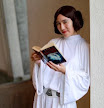Classic Human Anatomy in Motion by Valerie L. Winslow [Review]
[Disclaimer: Full cover displayed below that features an artistic nude rendering for figure drawing.] Classic Human Anatomy in Motion is a wonderful resource for artists who want to learn more about human anatomy and the body in motion.
 |
| © 2015 Watson-Guptill |
Author: Valerie L. Winslow
Published: 2015 by Watson-Guptill Publications
About the Book:
This essential companion book to the bestselling Classic Human Anatomy provides artists and art students with a deeper understanding of human anatomy and different types of motion, inspiring more realistic and energetic figurative art.The Artist Librarian's Review:
Fine-art instruction books do not usually focus on anatomy as it relates to movement, despite its great artistic significance. Written by a long-time expert on drawing and painting human anatomy, Classic Human Anatomy in Motion offers artists everything they need to realistically draw the human figure as it is affected by movement. Written in a friendly style, the book is illustrated with hundreds of life drawing studies (both quick poses and long studies), along with charts and diagrams showing the various anatomical and structural components.
This comprehensive manual features 5 distinct sections, each focusing on a different aspect of the human figure: bones and joint movement, muscle groups, surface form and soft tissue characteristics, structure, and movement. Each chapter builds an artistic understanding of how motion transforms the human figure and can create a sense of expressive vibrancy in one’s art.
As a studio art major initially focused on drawing and painting, human anatomy and figure drawing was an important component to my studies: In fact, I took a course focused on life drawing for an entire semester! Classic Human Anatomy in Motion is a wonderful resource for artists who want to learn more about human anatomy and the body in motion.
The obvious question is, how would you convey or depict the human body in motion from static images and words? Well, Valerie L. Winslow has created a book that I would describe as a resource rather than instructional or step-by-step art book. While there aren't projects to follow along with, Winslow gives an overview of different sections and areas of the body and describes how they move as parts and in conjunction with other body parts. Topics covered include bones, joints, muscles/tendons characteristics, facial muscles and expressions, muscles of specific parts of the body (e.g. neck, arms, legs, torso, etc.), body types and tissue.
The second part of the book covers eight methods of gesture (or action) drawing, how to capture movement, and an overview of body movements. It's almost like a textbook for a figure drawing course: What you read and learn about in this book, you can put into practice in live model drawing sessions or in your observations. Because human figures are so familiar to us --we see them every day-- sometimes it's easy to think that you know how to draw them. However, books like this encourage you to truly study and observe the human form. Things that I read about in this book will help me in my future work and practice.
It also is very approachable for artists and artists-to-be. As a practicing artist and instructor herself, while using the correct names/anatomical terminology of things such as muscles and bones, Winslow's text is accessible for non-medical students (such as artists or other laymen). While I know that artists often will borrow pure anatomy books written for the medical field for more depth, I felt this book was sufficient for my artistic needs. Drawings and detailed renderings are found on nearly every page to illustrate points from the text. A short bibliography of further reading and an index complete this book. I'd definitely recommend Classic Human Anatomy in Motion to anyone interested in drawing the human form, though high school students to adults would probably be able to make the most use of it.
[Disclosure: I received a complimentary copy of this book through the Blogging for Books program for review purposes.]
Do you have a favorite drawing or art book for rendering human figures? Share in the comments!
Content note: Just in case you couldn't tell from the cover, this book does contain drawings of human nudes for artistic research. =) If you are looking for human life drawing books with minimal renderings of nude figures, I suggest searching with the term "clothed figure."
About the Author:
Valerie L. Winslow is a professional fine artist who has exhibited her paintings and drawings in museums and galleries nationwide since 1977. Works by her are in many private collections, and she has won numerous awards, including Best of Show at the Palm Springs Desert Art Museum and the Sonoma Valley Museum of Art.
For more than thirty years she has taught figurative art and artistic anatomy at well-known institutions including the Art Center College of Design, in Pasadena, California, and the California Institute of the Arts (CalArts). She has also taught animators at Pixar Animation Studios. Currently, Valerie is n the faculty of San Francisco’ s Academy of Art University, School of Fine Arts, where she serves as Anatomy Coordinator.
Book Review
Books - Adult
Books - Art or Crafts
Books - General Market
Books - Non-Fiction
Books - Teen/YA














0 comments
Thank you for taking the time to share your thoughts! Comments are always welcomed and appreciated.